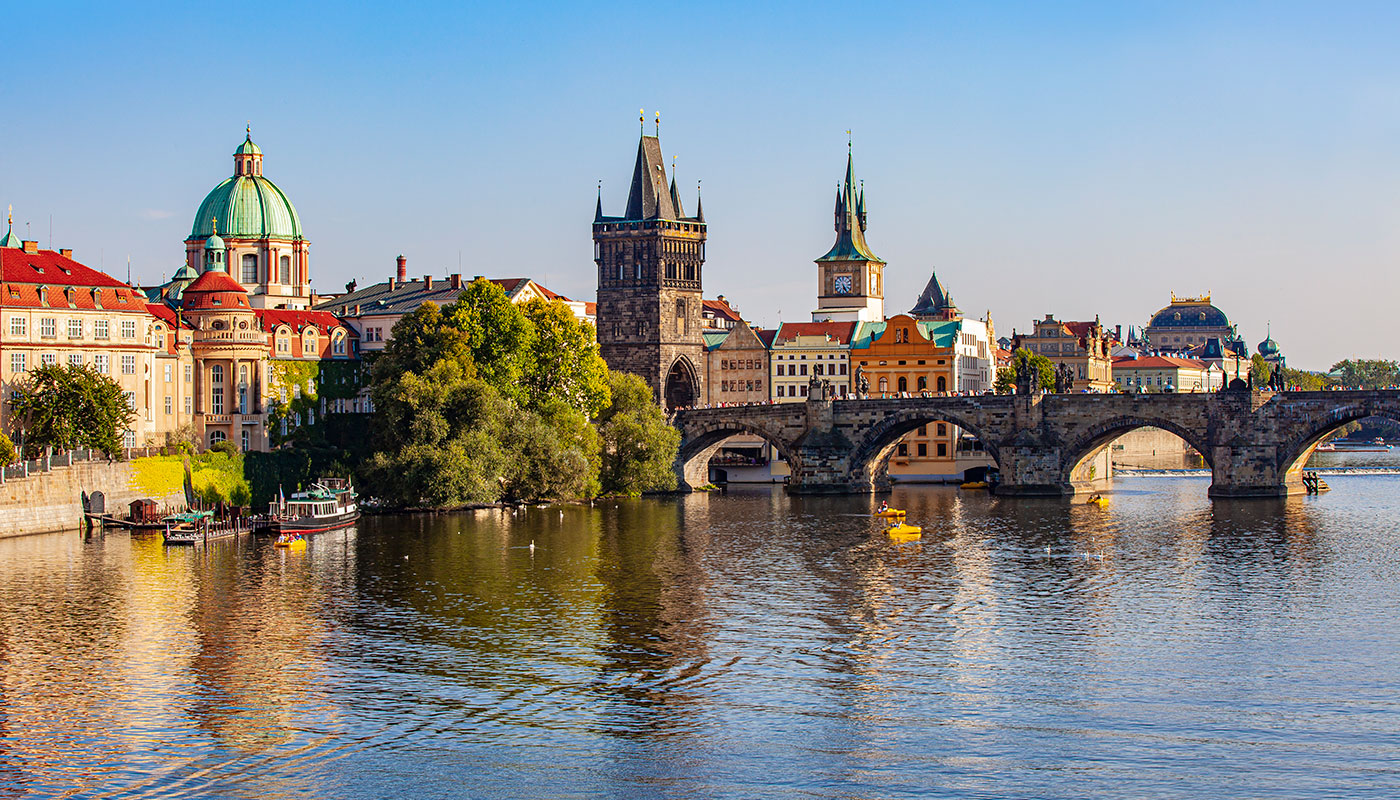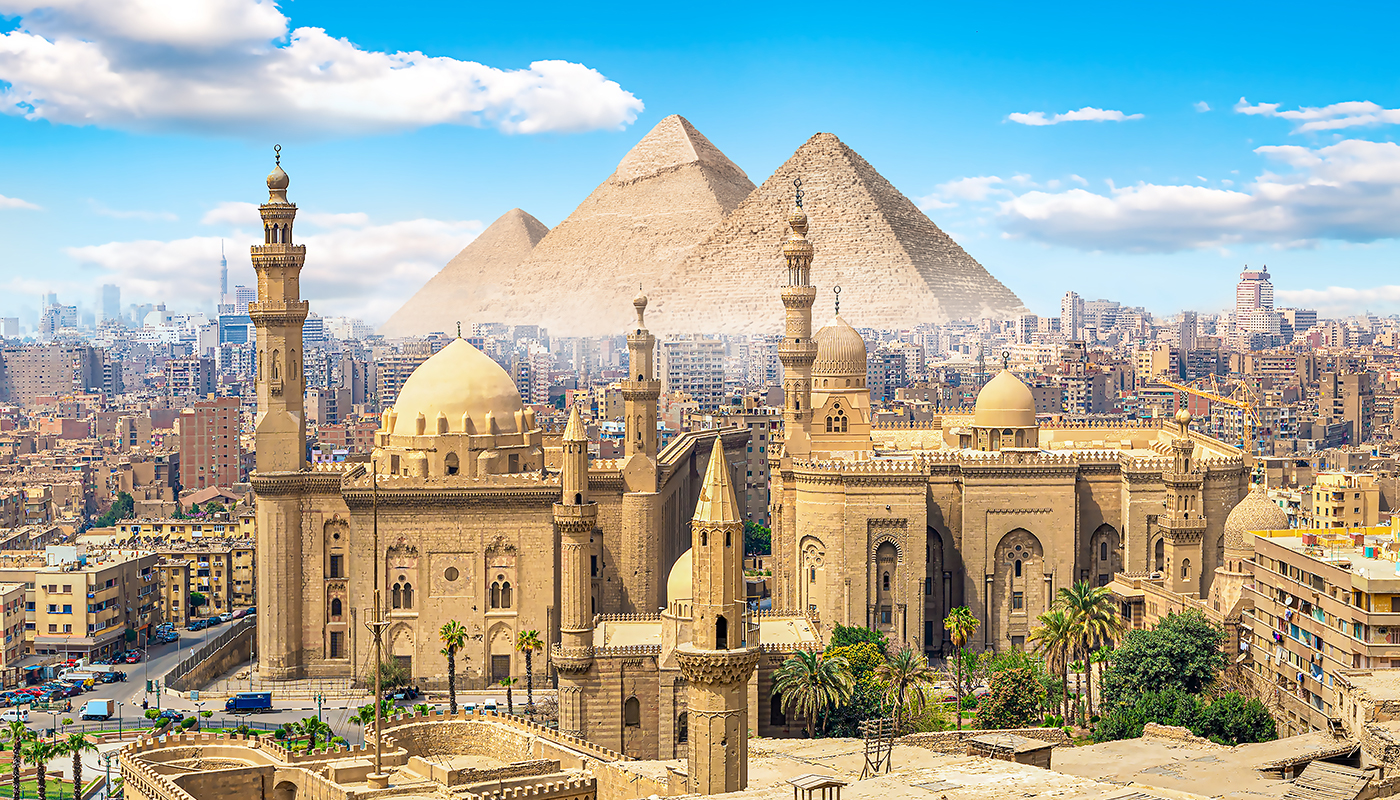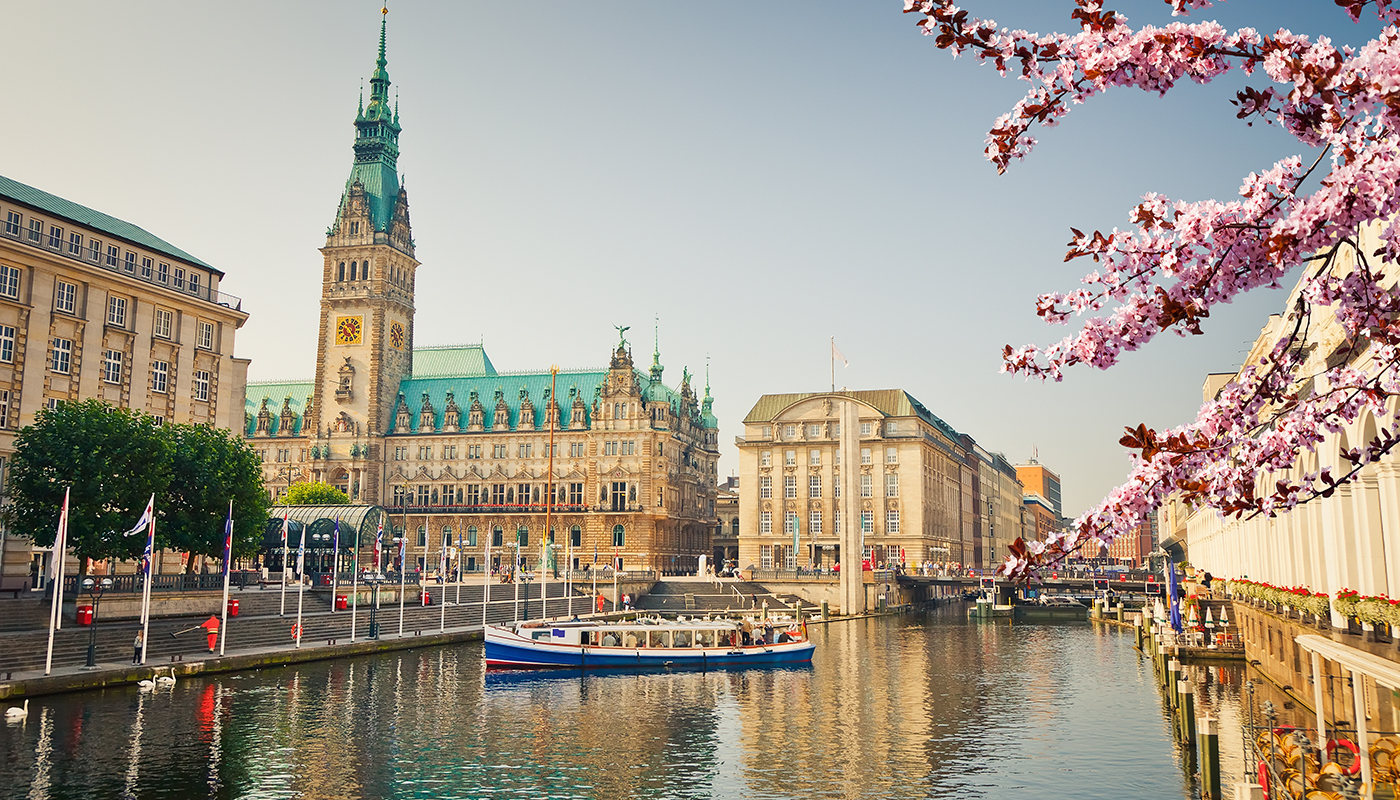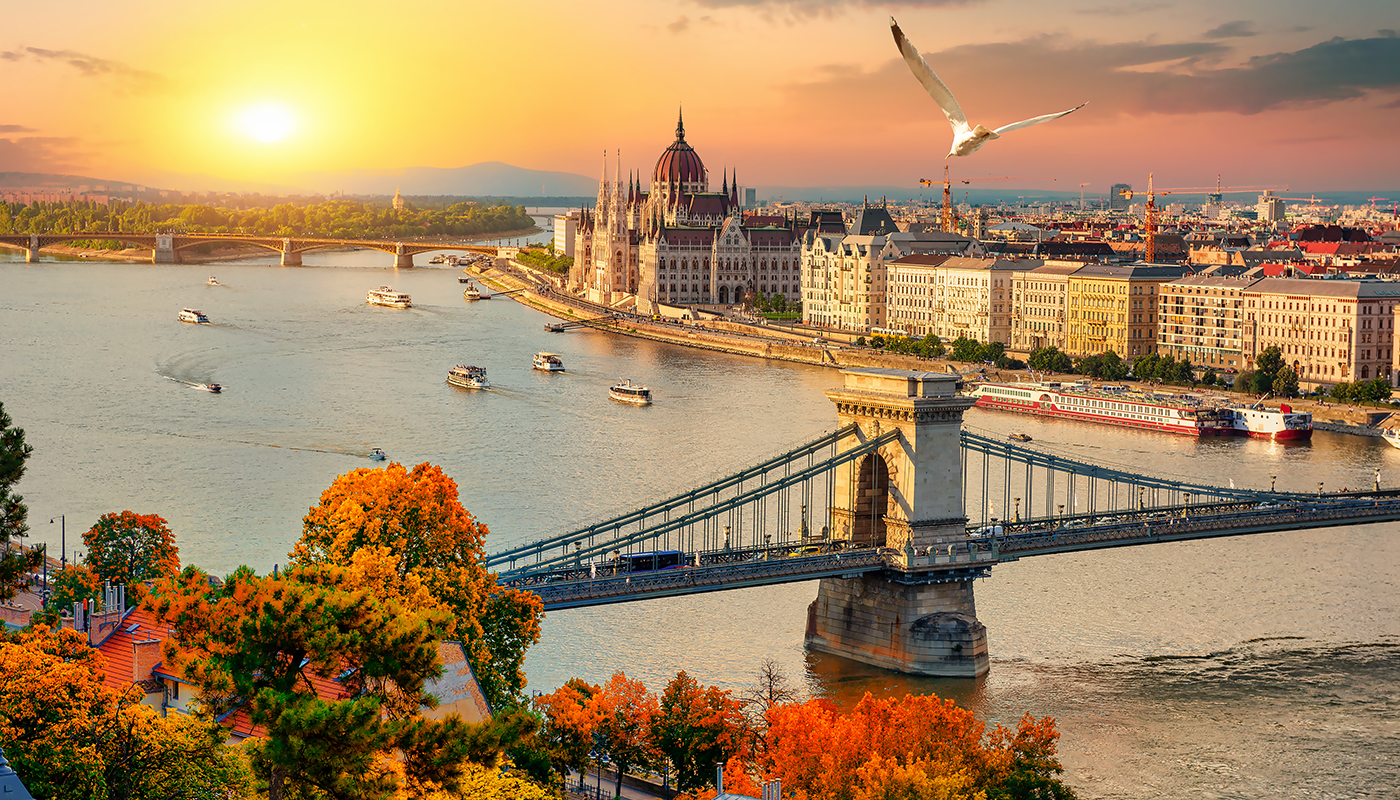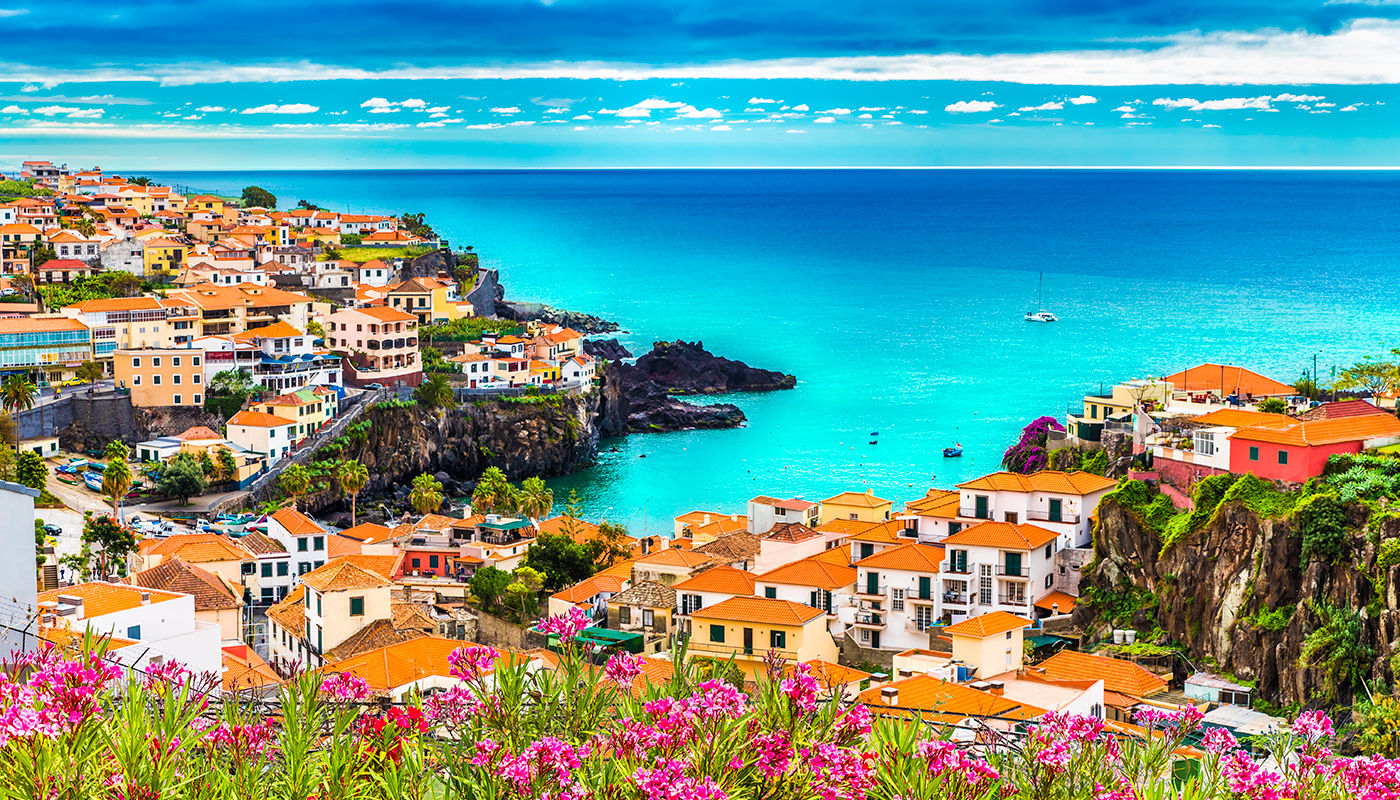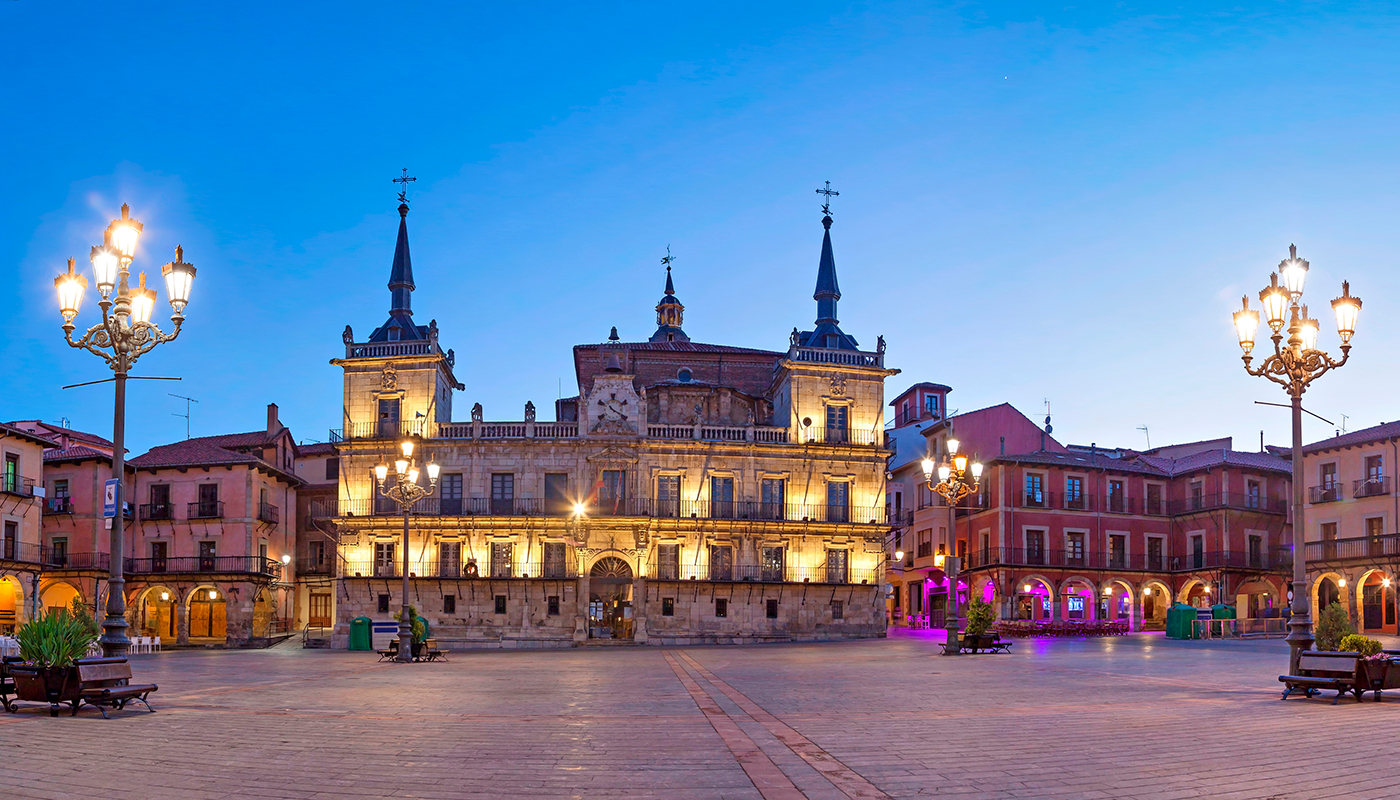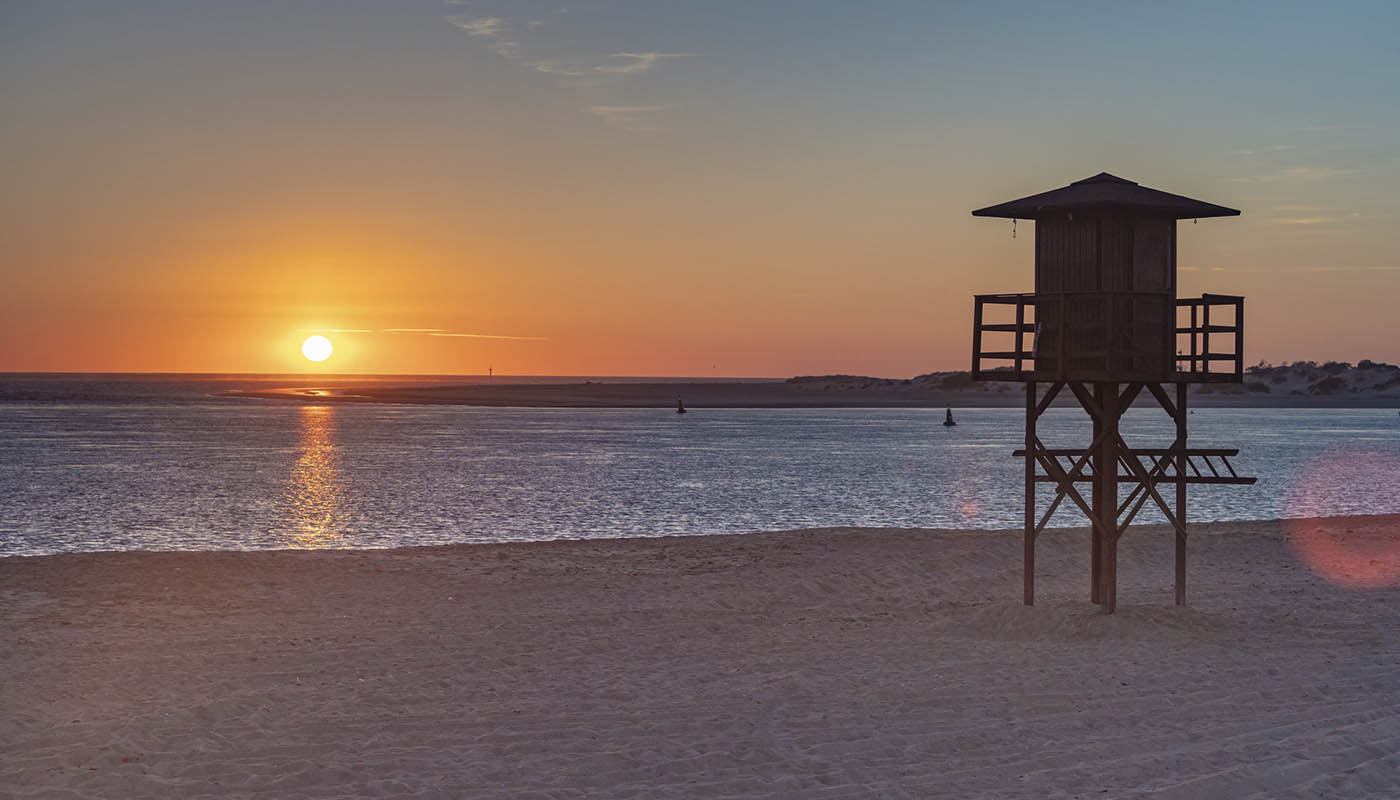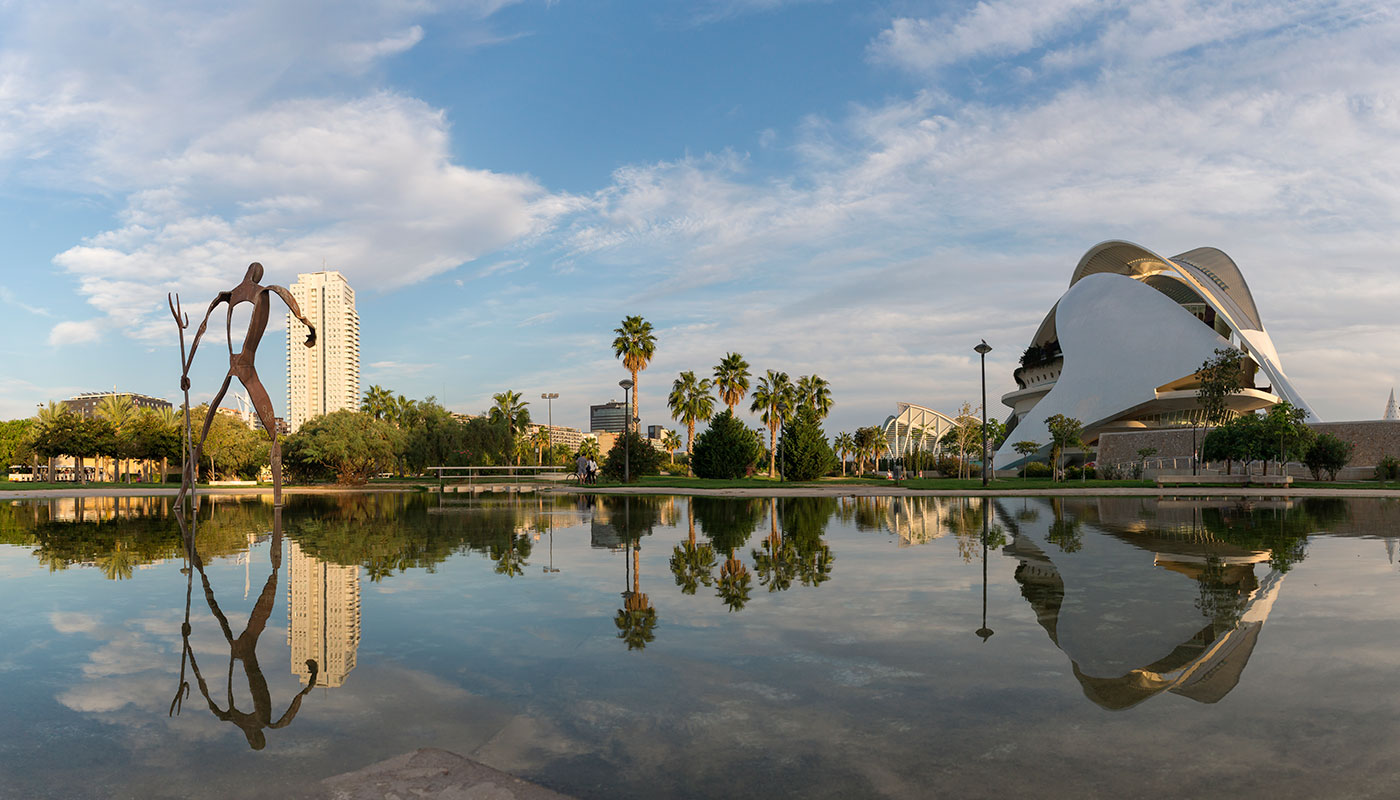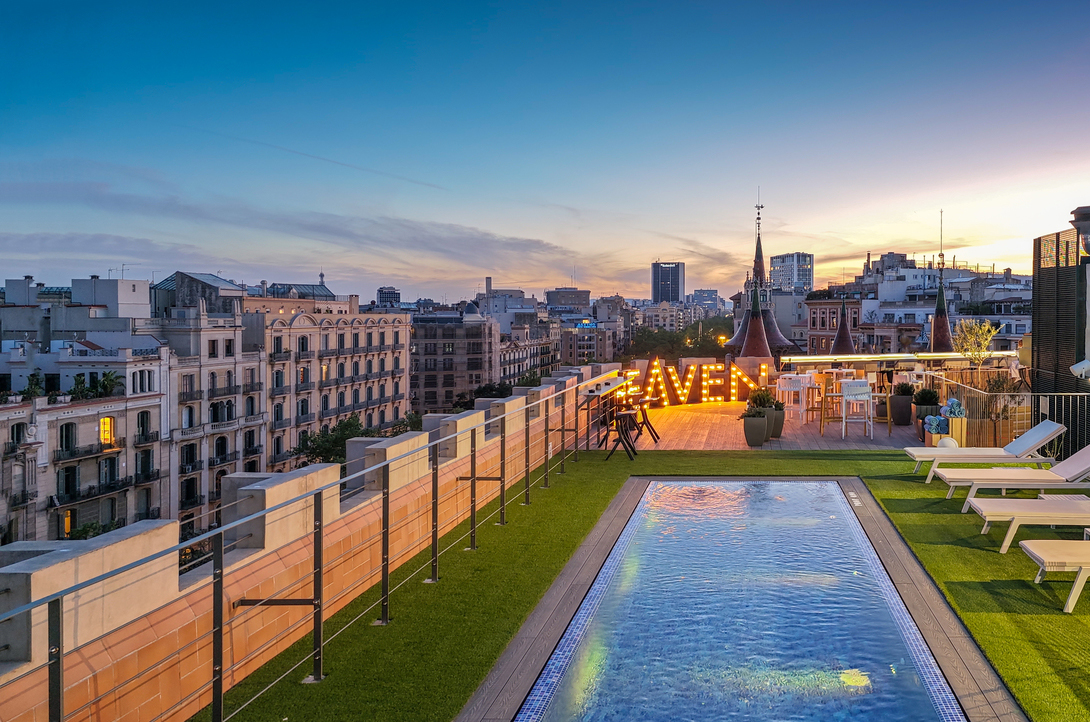Barcelona is full of surprises. The cosmopolitan, Mediterranean city, full of light and life, is home to countless interesting places made for enjoyment. To help you plan your visit and so you get the most out of your city break, we have compiled a list of the essential things to do in the Ciudad Condal, as it is often referred to, that you cannot miss. Modernist buildings, parks, squares, museums and gourmet markets await, ensuring that your Barcelona city break is absolutely unforgettable. The Sagrada Familia, Park Güell, the Palau de la Música, Barceloneta beach, the Cathedral and Las Ramblas are just a small example of the many attractions that make Barcelona one of the most beautiful cities in the world. Legend has it that Barcelona was founded by the Carthaginian leader Hamilcar Barca, although other more spiritual types maintain that it was the god Hercules himself who founded the city after finding his ninth boat (barca nona) moored on the beach. What is documented is the presence of Romans from the first century B.C. Today the city’s streets and monuments bear traces of its long history and its attractions are enjoyed by the scores of visitors that come to the city to enjoy its many charms. In this guide you can find all of Barcelona’s must-visit places so that you get the most out of your trip to the city. So whether you are staying for three days or a weekend, don’t miss a thing.
- Must-visit places in Barcelona
- The Sagrada Familia
- Park Güell
- Camp Nou
- Palau de la Música
- Casa Milà
- Caso Batlló
- Barcelona cathedral
- La Rambla
- Torre Agbar
- Plaza de Catalunya
- La Boquería
- Montjüic fountain and Plaza de España
- Monjüic castle
- Ciutadella park
- Arco del triunfo
- Santa María del Mar basilica
- Gran Teatre del Liceu
- Port Vell
- Port Olimpic
- Palacio Güell
- Passeig de Gràcia
- Horta labyrinth
- The Carmel bunkers
- Tibidabo hill and Temple Expiatori del Sagrat Cor
- Las Arenas shopping centre
- Barcelona neighbourhoods in which to lose yourself
- Where to stay in Barcelona
PLACES YOU CANNOT MISS IN BARCELONA
Sagrada Familia basilica
The Sagrada Familia is perhaps the most famous and most visited landmark in Barcelona – an emblem of the city. The architect Antoni Gaudí dedicated 40 years of his life to its construction and it is for this reason that he was laid to rest beneath one of the basilica’s naves. His particular, striking brand of architecture leaves no one indifferent. The Sagrada Familia is a true gem and an emblem of modernist Barcelona that you cannot miss.

Park Güell
Declared a Unesco Heritage Site in 1984, Park Güell is one of Gaudí’s most outstanding creations, since it blends the unique style of his modernist works with other natural motifs. The dragon, on the main stairway, is the park’s icon.

Camp Nou
If you like sport, especially football, you cannot miss the stadium of one of the world’s biggest clubs. The Camp Nou is the inner sanctum of blaugranas, as supporters are known, as well as an impressive, magnificent stadium with a capacity of 98,000 people that is well worth a visit.

Palau de la Música
Built in 1908 by Lluís Domènech i Montaner, the Palau de la Música encapsulates the history of modernism and world music and is one of the most spectacular auditoriums in the world with a large, beautiful concert hall. Be sure not to miss the main façade too. The building is a Unesco World Heritage Site for good reason.

Casa Milà
Commonly known as La Pedrera, Casa Milá is also categorised as a World Heritage Site. It is a work of art in itself due to its extraordinary architecture and the large windows dotted across its façade. Decorated with sea and mythological motifs, the building also houses an exhibition room and concerts are held on its roof terrace.

Casa Batlló
Casa Batlló, designed by Gaudí, was built between 1902 and 1906, converting an ordinary building into an impressive creation. Its multi-coloured walls, balconies and roofs covered in scales will leave you in awe.

Barcelona cathedral
Barcelona cathedral is an impressive example of Spanish Gothic architecture declared a Cultural Interest Site and a National Historical Monument. In addition to the interior, the cloister is also well worth a visit.
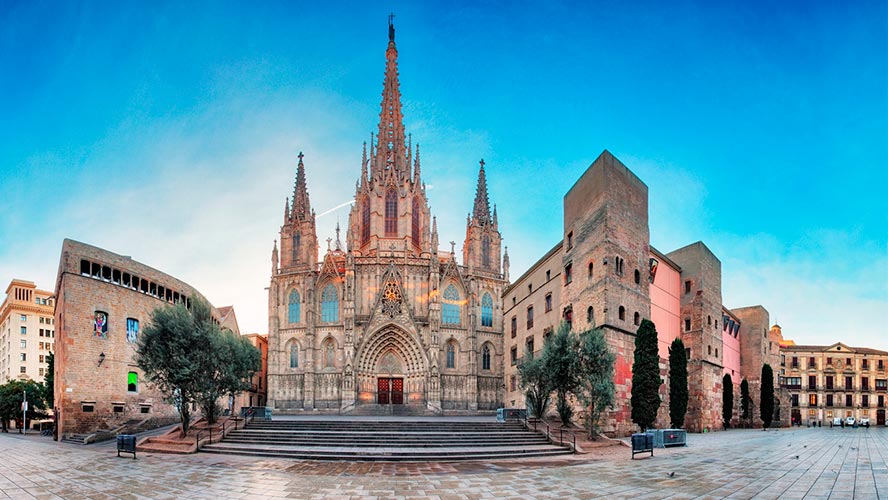
La Rambla
The most famous street in Barcelona, on La Rambla you can get a feel for the hustle and bustle of the city with people everywhere you look, shops, street artists and stalls selling crafts, souvenirs and flowers. Be sure to walk the full length from Plaça de Catalunya to Port Vell.

Torre Agbar
Standing at a height of 142 metres, Torre Agbar dominates the Barcelona skyline. It was designed by the French architect Jean Nouvel, who took inspiration from the architecture of Gaudí. One of the building’s most interesting details are the lights that change colours, which are even more special at certain times of the year.

Plaza de Catalunya
One of the city’s main hubs and a meeting point that separates the old city from the Eixample district, Plaça de Catalunya was built in 1889 after the International Exposition that was held in Barcelona the previous year. It is lined with important buildings and boasts two large fountains.

Boquería market
In addition to being a municipal market, Boquería market has become one of Barcelona’s most important tourist attractions. Situated on Las Ramblas, its culinary offerings are so appetising that you won’t be able to resist trying the gourmet delicacies sold at its varied stalls.

The Montjuïc magic fountain and Plaza de España
After Plaça de Catalunya, Plaça d’Espanya is one of the most important places in Barcelona. One of its great attractions is the Montjuïc magic fountain, where you can enjoy a water, light and music show. It is also home to the former bullring, which is now a large shopping centre.

Montjuïc castle
On the top of the hill, Montjuïc castle is a former military stronghold categorised as a Site of Cultural Interest and a National Heritage Site. Its walls have borne witness to countless battles throughout the history of Barcelona.

Ciutadella park
Barcelona’s quintessential park, across 17 hectares you will find a zoo, buildings of the Catalan Parliament, a church, a secondary school and even a lake. Ciutadella park also hosts fairs, open-air markets and sporting events. You can reach this lovely park by metro getting off Arc de Triomf (L1), Ciutadella/Vila Olímpica (L4) or Jaume I (L4).

Arc de Triomf
The Arc de Triomf was built in 1888 as an entrance to the International Exposition that took place in Ciutadella park. Although its shape and proportions are built in classical style, its decoration is full of symbolic motifs. The arch is an emblem of Barcelona’s transition into modernity.

Santa María del Mar basilica
The Santa María del Mar basilica is a simple, austere construction that is nevertheless steeped in a type of beauty especially associated with the Catalan Gothic. Particularly notable are its beautiful stained glass windows. The basilica served as inspiration for the writer Ildefonso Falcones and his famous novel Cathedral of the Sea. It is the resting place of the patron saint of sailors.

Gran Teatre del Liceu
Situated on Las Ramblas, since 1847 the Gran Teatre del Liceu has played host to the very best opera singers and is regarded as one of the most important opera theatres in the world. A guided tour is a great way to explore it in depth and not miss any of its beautiful details as is, of course, catching a performance.

Port Vell
Port Vell is the oldest part of the port of Barcelona. Its facilities are currently used for recreational boats and the middle part is home to the Maremagnun shopping and entertainment centre.

Port Olimpic
In 1992, Barcelona’s Port Olimpic was the setting of the sailing competitions of the Barcelona Olympic Games and today it is one of the city’s liveliest entertainment areas. It is situated close to the beach where you can do water sports and boasts scores of restaurants where you can sample food typical of Barcelona.

Palacio Güell
The Palacio Güell was designed by Gaudí for the Güell family. The building remains practically the same as when the artist designed it. Touring through this unique building from the basement to the rooftop, passing through the house’s different rooms, is an experience you cannot miss.
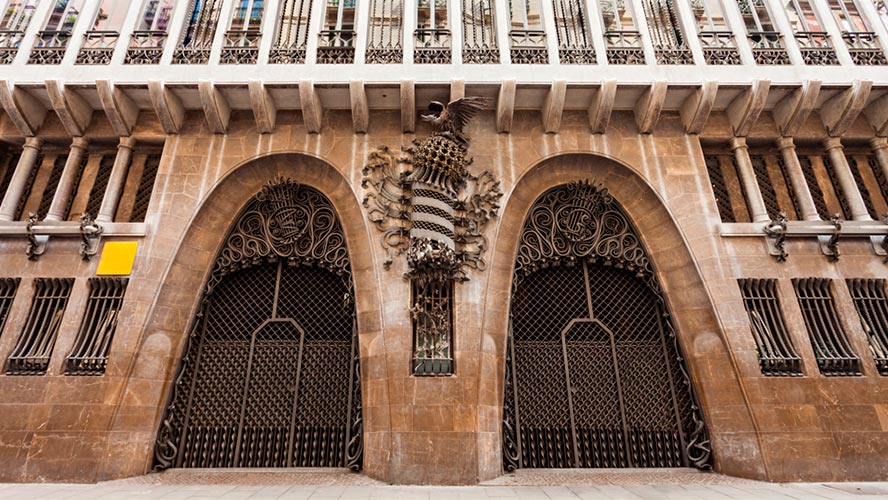
Passeig de Gràcia
Passeig de Gràcia is one of the best shopping streets in the city where you will find high-end fashion and accessories brands as well as more budget-friendly options. The street is also home to many of Gaudí and Lluís Domènech i Montaner’s most famous buildings.
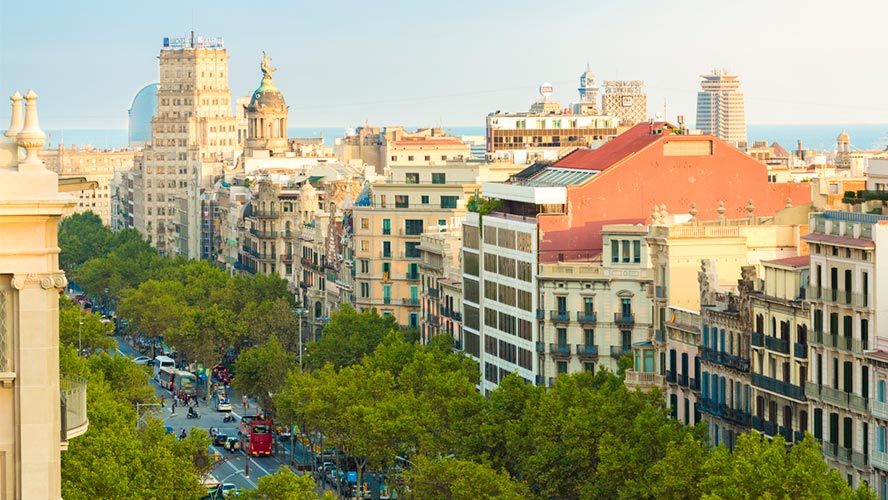
Horta labyrinth
One of the prettiest parks in Barcelona, this romantic space combines nature and interesting architecture to perfection. Situated at the foot of the Collserola mountains, it is named after the labyrinth made of trimmed Cypress trees that you can visit and explore in the lower part of the garden. In its day the land on which the park lies belonged to the Desvalls family, who donated it to the City Council in 1967. The garden-museum has been open to the public since 1971.

The Carmel bunkers
Located at the highest point of Turó de la Rovira, the bunkers in the Carmel neighbourhood are a fantastic viewpoint from where you can enjoy spectacular views of Barcelona. Despite its name, there have never been any bunkers on the top of Turó de la Rovira but rather an anti-aircraft battery, which was key to the city’s defence system during the Spanish Civil War. The site is very popular with young people and a popular tourist destination. It has served as a backdrop for adverts, films and TV series and countless images of it can be found on social media.

Tibidabo hill and the Temple Expiatori del Sagrat Cor
Tibidabo is one of the most emblematic and magical places in the city of Barcelona as well as the highest point in the Collserola mountains providing almost unbeatable views of Barcelona and the Vallés region. Tibidabo amusement park offers visitors over 30 attractions for all ages in addition to lovely restaurants and a picnic area. Tibidabo is also the site of the Temple Expiatori del Sagrat Cor (Temple of the Sacred Heart), designed by Enric Sagnier in 1902 and completed in 1961. The neo-Gothic-style building is crowned by a large bronze statue of the Sacred Heart. A lift will take you to the highest part of the temple, 500 metres above sea level, from where you can enjoy incredible views of the city – a true window onto Barcelona.

Las Arenas shopping centre
Situated on Plaça d’Espanya, the Las Arenas shopping centre is housed within Barcelona’s former bullring, which had remained unused from 19 June 1977, the day on which the final bullfight took place. The complex was redesigned by the architect Richard Rogers and since 2011 it functions as a shopping centre, sports centre and music centre with 360-degree panoramic views of the city. The top floor is lined with restaurants, the one below houses a cinema and the rest are occupied with shops and small businesses.
BARCELONA NEIGHBOURHOODS IN WHICH TO LOSE YOURSELF
Barcelona’s Gothic Quarter
One of the oldest neighbourhoods in Barcelona, with narrow medieval streets and hidden squares, the Gothic Quarter is one of the most charming places to stroll around and enjoy the city. Don’t miss walking through the square in front of the Cathedral, Carrer del Bisbe and Plaça Reial and sitting at one of its terraces.

Barceloneta beach and neighbourhood
Barceloneta is not just the name of a famous beach, although that is often what we identify it with, but a neighbourhood with a seafaring spirit. Situated within the Ciutat Vella district, it was built to provide housing for residents from the La Ribera neighbourhood, who were evicted in the eighteenth century to make way for Ciutadella park.
Aside from its history, today Barceloneta is the place to go to eat at a seafood restaurant, go shopping, sunbathe, and enjoy the beach. Much of the city’s 4.5 kilometres of beaches are situated in the area. Make the most of your time in Barcelona to explore this authentic corner of the city.

The Raval neighbourhood
Somewhere that you should not miss on a trip to Barcelona is Raval, because, however many times you go there, you will always find something new. The ever-evolving neighbourhood is a favourite among art lovers, since it is home to MACBA (Barcelona Contemporary Art Museum) and CCCB (Barcelona Centre of Contemporary Culture). What’s more, its design shops, art galleries and graffiti, which give the area an even more urban feel, always offer surprises. It is also the perfect place to go for tapas in bohemian bars and, if you like the atmosphere of markets, be sure to visit La Boquería, a real institution in the Catalan capital.

The Gràcia district
The Gràcia district, made up of five neighbourhoods, is the smallest district in Barcelona, which does not mean to say that it isn’t an essential place to visit on a city break. One of its most emblematic neighbourhoods is Villa de Gràcia, which dates back from the seventeenth century. Although it is today integrated into the city, the area still maintains its own identity and sense of belonging. It is a lovely place to take a stroll, have a drink on one of its terraces, visit an art workshop or listen to some Catalan rumba, since the district is the birthplace of artists such as El Pescaílla, and, of course, visit Park Güell, one of Gaudí’s greatest works.
Try not to confuse the Gràcia neighbourhood with Passeig de Gràcia, which has a very different feel.

BARCELONA’S MOST IMPORTANT MUSEUMS
Nacional Art Museum of Catalunya
The Museu Nacional d’Art de Catalunya is housed in the National Palace, one of the most emblematic buildings from the 1929 International Exposition. It can be seen up high from Plaça d’Espanya, from where it can be reached via a lovely staircase. Works from throughout history await to be discovered.

CosmoCaixa and CaixaForum
Belonging to Fundació La Caixa, these two cultural centres play an important educational role and are housed in historical buildings that have been painstakingly renovated. CosmoCaixa, on the site of the former Science Museum, is housed in an old asylum for the blind built by the famous architect Josep Domènech i Estapà. Today it brings visitors of all ages in touch with nature and science. CaixaForum, meanwhile, is more linked to art, and is housed in a former modernist-style factory on Montjuïc hill designed by Josep Puig i Cadafalch.

Poble Espanyol museum
Poble Espanyol is an open-air museum situated on Montjuïc hill built for the 1929 International Exposition as a showcase of Spanish culture and architecture. In it you will find reproductions of the most representatives places from many Spanish cities.

Picasso museum
The Picasso museum possesses the largest collection of pieces from the Malaga-born artist’s youth and formative years in Barcelona. Touring this large art gallery housed in several medieval palaces is a true privilege in light of the paintings that hang from its walls and its sculptures and prints. It is worth stopping to observe some pieces that demonstrate the relationship that Picasso had with other contemporary artists, who he would meet up with at the famous café Els Quatre Gats.
MACBA (Barcelona Contemporary Art Museum)
In this museum, more commonly known by the acronym MACBA, art from the second half of the twentieth century takes centre stage. Over 5,000 artworks are distributed throughout a building that exudes modernity, spanning more than 14,000 m2. Its large white rooms, vast windows and the abstract art on offer help create an experience that you should not miss when in Barcelona.
The museum also boasts an extensive artistic and culture programme as well as interesting temporary exhibitions.

Fundación Joan Miró
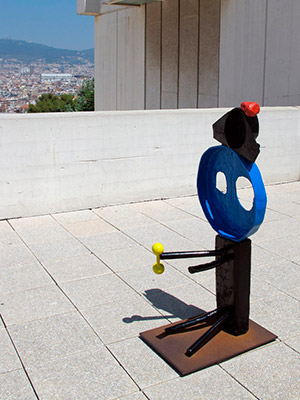
The space housing the collection of Joan Miró was conceived by the artist himself and the architect Josep Lluís Sert in the heart of Montjuïc hill. A visit to this art sanctuary is made all the more powerful by the building itself, the surrounding gardens and the dialogue that the Catalan artist’s works establish with the whole ensemble. To visit the Fundació Miró it to get lost amid its courtyards, terraces and exhibition rooms and round it all off by enjoying the surrounding nature.
As part of its permanent exhibition, in addition to admiring paintings, sculptures and tapestries by Joan Miró, you can also see works by other artists such as Chillida, Tàpies and Calder.
Casa-Museo Gaudí
Situated within the Park Güell complex, the Gaudí house-museum was the artist’s former residence for almost 20 years, between 1906 and 1925. In 1963 it opened for the first time as a museum and today houses a collection of furniture and objects designed by the architect, in addition to pieces by people that worked with him. After being put up for sale unsuccessfully, the building—designed by Francesc Berenguer, a regular collaborator of Gaudí between 1903 and 1905—was bought by Gaudí, in 1906, who took up residence in it together with his niece and father until 1925, several months before his death when he moved his studio to the Sagrada Familia.
The house-museum, which shows the architect’s most personal side with object and documents related to his life, is set across three floors. Visitors can view the bedroom, studio and the inner entrance door, in addition to the furniture designed by Gaudí for buildings such as Casa Batlló, Casa Calvet, Casa Milà, Casa Vicents and the crypt of Colonia Güell.
Dónde alojarse en Barcelona
Hotel Barceló Raval
Rated with four stars and boasting excellent value for money, the hotel Barceló Raval is situated next to Las Ramblas and, therefore, is just a short walk from Plaça de Catalunya, the Teatre del Liceu, Boquería market and the Cathedral. Its 182 rooms and four suites boast all creature comforts and look out onto the Raval neighbourhood. The whole hotel exudes modernity, a cosmopolitan feel and urban DNA. The B-Lounge is the place to go for signature tapas, cocktails and one of the most famous Sunday brunches in the city.
Hotel Barceló Sants
Situated above Sants station, the four-star hotel Barceló Sants resembles a spacecraft, inviting guests to enjoy a imaginary journey through space. Although the hotel has a futuristic, cutting-edge look, its 312 Orbital rooms, 52 Stratosphere rooms and 14 Orbital suites offer a cosmic ambience in which comfort and amenities come before design. In addition to being one of the best-located hotels in the city, it boasts floor space spanning 3,000 square metres distributed across 15 lounge areas, two restaurants, a cafeteria, a bar and a gym.
Hotel Occidental Diagonal 414
Situated on Avinguda Diagonal, this boutique design hotel is just a short walk from Casa de les Punxes, one of Barcelona’s modernist icons, and very close to Passeig de Gràcia and the city’s most important tourist attractions. The hotel boasts 100 well-decorated, welcoming rooms, a 25-square-metre gym open 24 hours a day and a private car park for hotel guests. In terms of dining options, the hotel Occidental Diagonal 414 has a buffet restaurant decorated in Nordic style serving a selection of Mediterranean and international specialities as well as a snack bar with a tapas and vermouth menu.
Hotel Occidental Atenea Mar – Adults Only
This four-star urban hotel is adults only and has an excellent location, 150 metres from Nova Mar Bella beach and a 15-minute walk from CCIB (Barcelona International Convention Centre). The hotel Occidental Atenea Mar – Adults Only boasts 191 modern, spacious rooms with sea or city views and a wealth of details. It also has a car park, a free-to-use fitness room, five lounge areas, a gourmet restaurant serving Mediterranean cuisine, a terrace with a snack bar, a 48-square-metre infinity pool and a solarium with Balinese beds and sun loungers.
At Barceló Experiences you can continue your journey discovering Spain’s many charms by visiting our comprehensive tourist guides of other must-visit destinations such as Madrid, Cádiz, Asturias, Valencia, Seville and Granada.








